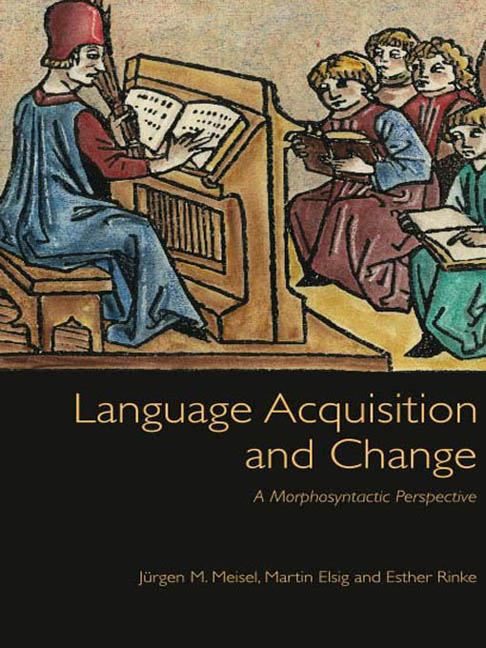Book contents
- Frontmatter
- Contents
- Preface
- Abbreviations
- 1 Variation and change in languages
- 2 Language change across the lifespan
- 3 The child as the locus and agent of grammatical change
- 4 Structural ambiguity as a possible trigger of syntactic change
- 5 Language contact as a possible trigger of change
- 6 Acquisition in multilingual settings: Implications for explanations of change
- 7 Towards an explanatory theory of grammatical change
- 8 References
- Index
7 - Towards an explanatory theory of grammatical change
Published online by Cambridge University Press: 07 December 2017
- Frontmatter
- Contents
- Preface
- Abbreviations
- 1 Variation and change in languages
- 2 Language change across the lifespan
- 3 The child as the locus and agent of grammatical change
- 4 Structural ambiguity as a possible trigger of syntactic change
- 5 Language contact as a possible trigger of change
- 6 Acquisition in multilingual settings: Implications for explanations of change
- 7 Towards an explanatory theory of grammatical change
- 8 References
- Index
Summary
Throughout this book, we have focused on processes and mechanisms of diachronic change affecting core properties of grammars, i.e. linguistic domains referring, for example, to parameterized principles of UG. We were mainly concerned with the questions of which language-external and -internal factors induce speakers to reorganize their grammatical knowledge and who the innovators are in such instances of parametric change. We paid particular attention to the relation between language acquisition and diachronic change and scrutinized different acquisition scenarios with respect to their explanatory power for diachronic change.
As a first take on the matter, it turned out to be of crucial importance to determine for each particular instance of a linguistic change whether it actually involves parametric change or rather some other type of change not affecting parameter settings. In addition, we have to distinguish between grammatical change and change at the level of language use. As an example of this, we have come across a number of cases which are clearly not accompanied by a restructuring of the underlying grammars, as for instance the increasing preference in choice of the quotative be like over other lexical alternatives in Toronto English (Tagliamonte and D'Arcy 2009), briefly alluded to in Chapter 2. More importantly, however, we were able to show that a number of morphosyntactic changes, which were often attributed in the literature to some underlying parametric change, upon closer inspection were revealed not to be instances of it. This is the case, for instance, in the decrease and eventual loss of Old French XV order, reminiscent of the Germanic verb-second grammar but different from it in crucial respects, above all with regard to the seemingly unrestricted capacity of this variety to also allow V3 sequences in the very same contexts; cf. Chapter 4 and Section 5.2.1.
In the following sections, we will briefly summarize our main findings and arguments developed in Chapters 2–6 of this book, and then try to suggest a more general view on the topic of our study. Our objective has been to develop a theory of language change, and in particular grammatical change, which is consonant with the empirical findings from research on language acquisition, since children in the process of language development have been claimed to be the principal agents of grammatical change.
- Type
- Chapter
- Information
- Language Acquisition and ChangeA Morphosyntactic Perspective, pp. 166 - 183Publisher: Edinburgh University PressPrint publication year: 2013



